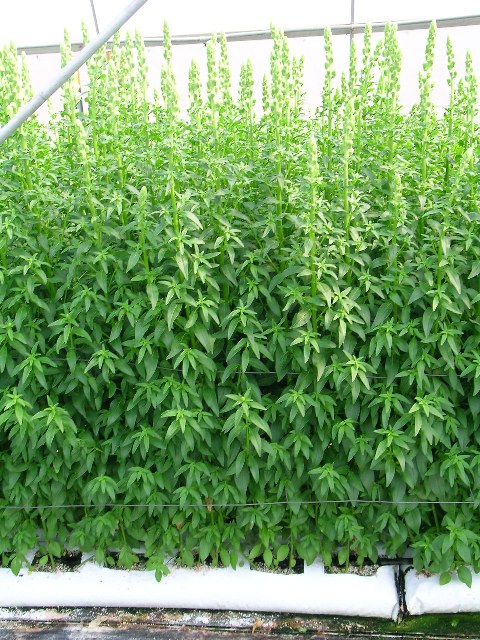You are here
Production Objectives
 The primary production objective of this research is to improve the quality of cut-flower snapdragons, particularly those produced during summer.
The primary production objective of this research is to improve the quality of cut-flower snapdragons, particularly those produced during summer.
Maintaining the water and nutritional status of the crop during the summer months is the ultimate challenge for snapdragon growers, given that it is a cool-season crop and the growing conditions in the greenhouse are difficult to manage at that time of the year, with respect to maintaining water and nutrient availability.
The picture at right illustrates the large canopy volume, compared to the rooting volume. Since we suspect that water use is closely correlated to light interception, optimizing the plant density in the bag will also have a large effect on water use, and hence floral quality.
The economic test of the sensor network will be to see if we can increase the percentage of No.1 quality cuts from an average of 80% during summer to about 92%, which is the current average for the rest of the year.
